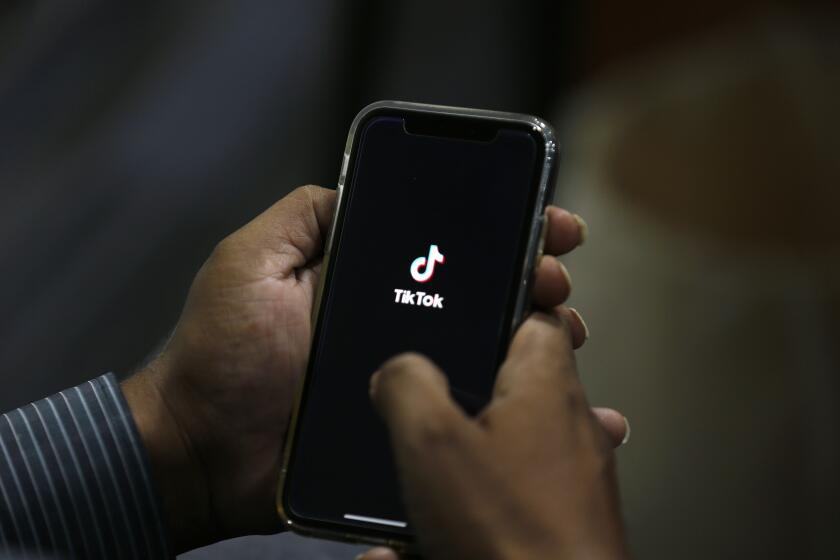When in Roam, Cellular Phone Users See a Decline in Surcharges
- Share via
Travelers with a penchant for going wireless have for years paid hefty roaming and long-distance charges in return for their mobility. But with competition for these top-tier customers heating up, the roaming empire is starting to crumble.
Following the lead of AT&T; Wireless and its new Digital One Rate offering, Bell Atlantic Mobile last week unveiled service plans that eliminate extra charges for using the company’s phones outside the user’s “home” area.
Sprint PCS, which serves Southern California, introduced a new flat-rate plan--available for a limited time--that erases extra traveling charges for heavy cell-phone users.
All three companies are primarily targeting the most lucrative customers--those who use their mobile phones frequently both at home and on the road. Those customers, though small in number, bring in substantial revenue.
“There’s new competition and more choices now,” said Bob Egan of GartnerGroup in Stamford, Conn. “I’m watching for some of the others to do this . . . because this is the new pricing model.”
If the new plans spread to other carriers, as Egan and others predict, it would significantly reduce the cost of using a cell phone on trips and encourage customers to use their phones more often, even over long distances.
“Those are national companies chipping away at the roaming premium and making roaming rates a nonissue,” said Darryl Sterling, an analyst at Yankee Group, a Boston-based research firm.
AT&T; Wireless reports that it added 200,000 customers in the first eight weeks after it launched its Digital One Rate plans in May--despite monthly fees starting at $90.
Nextel Communications Inc., which sells specialized service to business customers nationwide, was the first company to see a market without roaming charges. The company offers plans that carry long-distance fees but no additional per-minute fees for customers traveling outside their “home” area.
For more than a year, Nextel has hammered home that advantage--along with its groundbreaking per-second billing after the first minute--in humorous advertisements showing cell phone users ringing up massive bills with unnamed carriers.
But while Nextel has gained an impressive base of customers, its competitors didn’t rush to match the offer. That’s because roaming charges have been a staple in the industry ever since wireless customers began using their phones while traveling.
Finding common ground in the need to provide service beyond their own networks, cellular companies struck agreements to provide service to one another’s customers.
But the deals include fees to compensate companies that carry non-customer calls on their networks. The carriers have traditionally passed the fees on to their customers in the form of per-minute “roaming” charges.
Roaming fees have never been a small matter. The charges can easily add up to more than $1 per minute, especially after adding in long-distance levies. Last year, wireless customers amassed nearly $3 billion in roaming charges, about 11% of the year’s $27.5 billion in total revenue.
Eliminating the charges for customers forces the carrier to swallow the fees when their customers use other carriers’ networks.
“There are only a few carriers who could absorb it without taking a big risk,” said Shea Silidker, a consultant at Strategis Group in Washington.
AT&T; Wireless, Nextel, Bell Atlantic Mobile and Sprint PCS all have vast networks, making it easier to add plans. Still, pressure will mount for smaller carriers to follow or risk losing lucrative business customers.
*
In Southern California, many carriers offer extended “home” regions, giving customers more room to move without incurring roaming charges.
Prices vary, but L.A. Cellular and AirTouch Cellular have plans that allow customers to use free minutes throughout Southern California without extra roaming charges. Pacific Bell Mobile Services offers plans with the same benefit for its entire California and Nevada coverage areas. In each case, long-distance charges apply.
The no-roaming plans have limitations, however. The Digital One Rate plan offered by AT&T; Wireless, for example, isn’t available in Los Angeles or other cities where the company lacks its own network.
Customers on the plan must subscribe to the company’s digital service and use a special $200 phone to access all of AT&T;’s networks, which operate on different frequencies in some markets.
What’s more, like many of the other plans, AT&T;’s packages really appeal only to heavy users. The lowest-cost program is $89.99 a month and includes 600 minutes of air time a month, while the other options cost $119.99 for 1,000 minutes or $149.99 for 1,400 minutes. Additional minutes cost 25 cents each.
Bell Atlantic Mobile’s new SingleRate USA plan costs $159.99 per month and includes 1,600 minutes a month--the equivalent of a 10-cent-per-minute rate. Additional minutes cost 20 cents each, and there are no roaming or long-distance charges for calls to and from anywhere in the country.
Sprint PCS’ new plan, called the Dime Anytime package, costs $50 per month and includes 500 minutes (equal to 10 cents per minute), with no long-distance or roaming charges within the company’s 800-city national network. The plan was introduced Sept. 1 and is available until Nov. 22.
Nextel’s plans, which cover handsets that are both cellular phones and two-way radios, typically offer a set number of phone and radio minutes for a set monthly fee. They include long-distance charges of 15 cents per minute but no roaming charges.
But roaming isn’t an issue for Nextel since thus far its specialty phones work only in its own network.
Consumers considering flat-rate plans should pay attention to access fees, territory limitations, contract requirements and other factors that could reduce the appeal of some wireless packages.
*
Times staff writer Elizabeth Douglass can be reached via e-mail at elizabeth.douglass@latimes.com.
More to Read
Inside the business of entertainment
The Wide Shot brings you news, analysis and insights on everything from streaming wars to production — and what it all means for the future.
You may occasionally receive promotional content from the Los Angeles Times.










